Title : Applying unconventional virtual environments (UVE's) for enhancing creativity of architects
Project Lead : Mahdizadeh Hakak Alireza From : TU Delft (Netherlands)
Dates : from -- to 2014-02-18 16:36:38
Description :
Motivation and objectives :
Gaining my Doctorate degree in architecture in University of TU Delft (Netherlands). The project is a collaboration between TU Delft and Goldsmiths University of London. Also use the proven idea in architecture pedagogy.
Teams :
The group aims to explore techniques and methods for designing and building of non-standard, virtual and interactive architectures. Cutting edge techniques and methods are taught and applied by researchers and students.
Dates :
starting date : 09 December, 2013
ending date : 20 December, 2013
Facilities descriptions :
http://visionair-browser.g-scop.grenoble-inp.fr/visionair/Browser/Catalogs/VFACTORY.IT.html
Recordings & Results :
Creativity is the fountainhead of human civilization. All progress and innovation depend on our ability to change existing thinking patterns, enhance the ability, break with the present and build something new. Accentuating the role of creativity in design even more than other disciplines pushes one to underpin understanding creativity as key role player in Architecture. We can feed the brain with new data that the brain has never been experienced before (no physical rules are available there, e.g. no gravity, continuous change, infinite depth, etc.). This will stimulate the brain to perceive the new environment and starts bending it with the previous knowledge of space and eventually more creative idea will appear. Is there any empirical evidence on this hypothesis? A series of studies and of experiments within specific virtual environments and by tracking the user's head activity will be carried on to verify the hypothesis.
Conclusions :
A non-conventional immersive virtual reality environment has been designed and set-up, a set of starting experiments with 20 people has been carried, a set of impressions and comments about the perceptions and feelings has been collected, the EEG activity of the people during the experiments has been recorded. Next step is the processing and the analysis of the recorded EEGs.
Project Images :

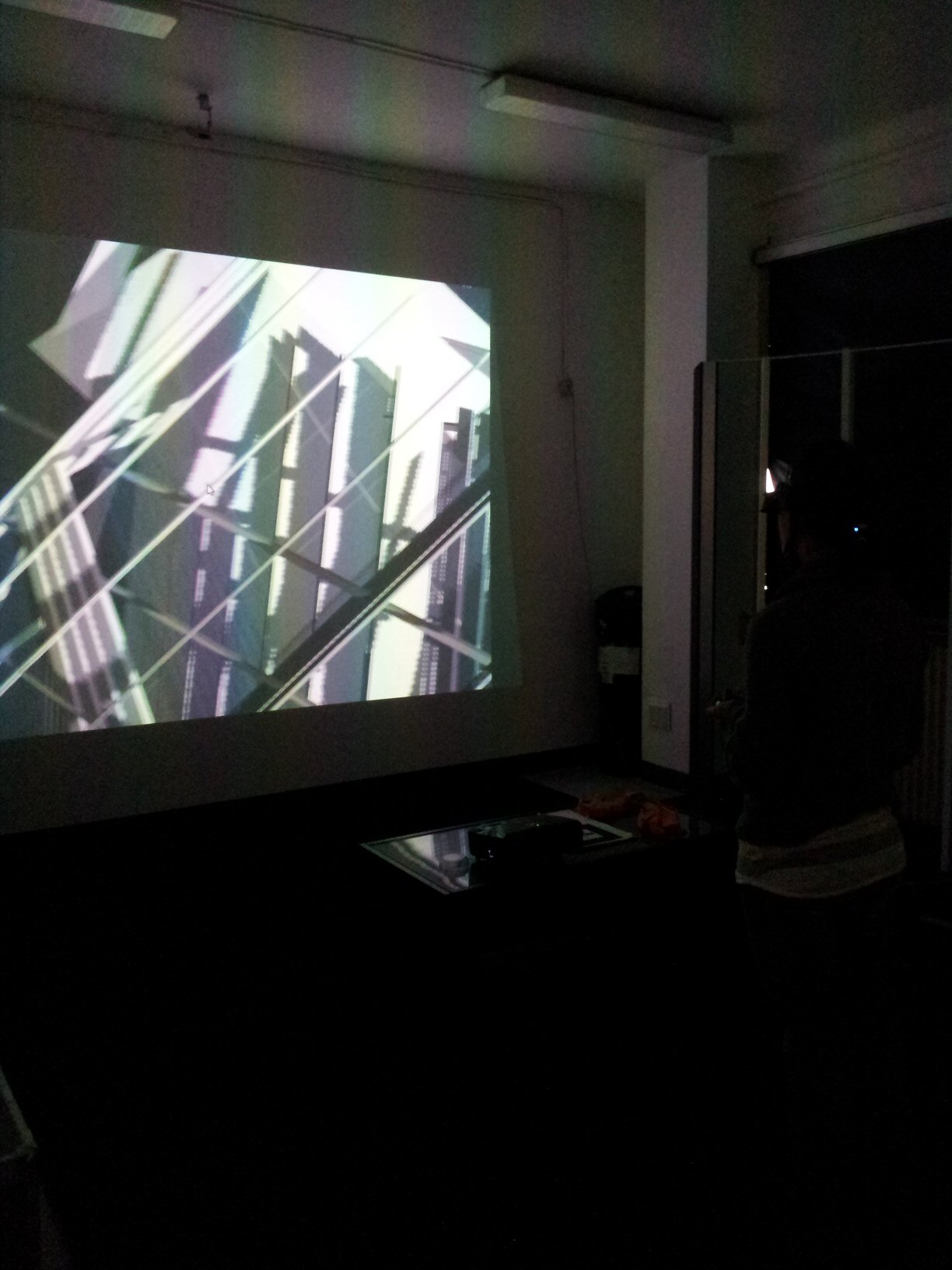

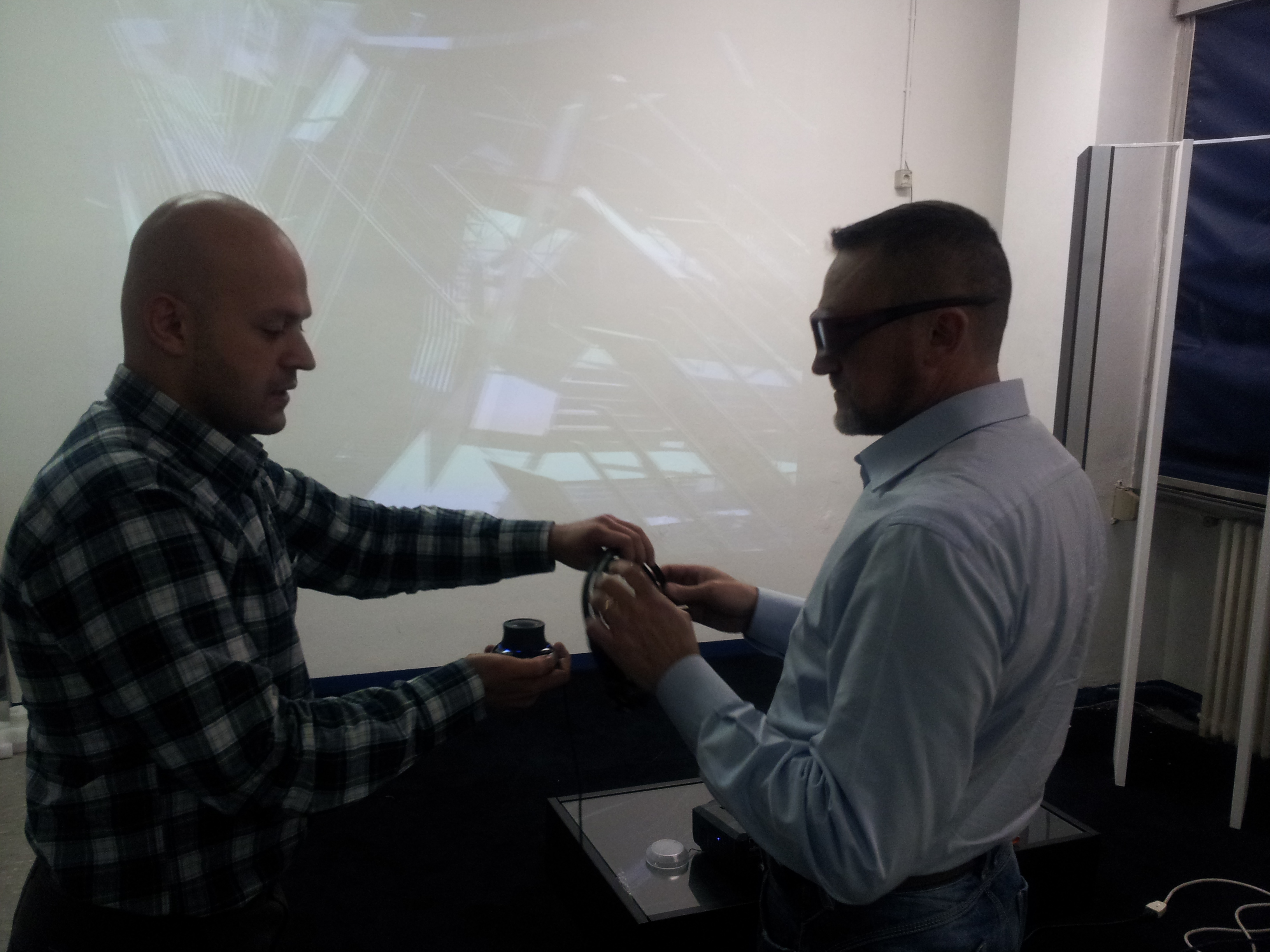
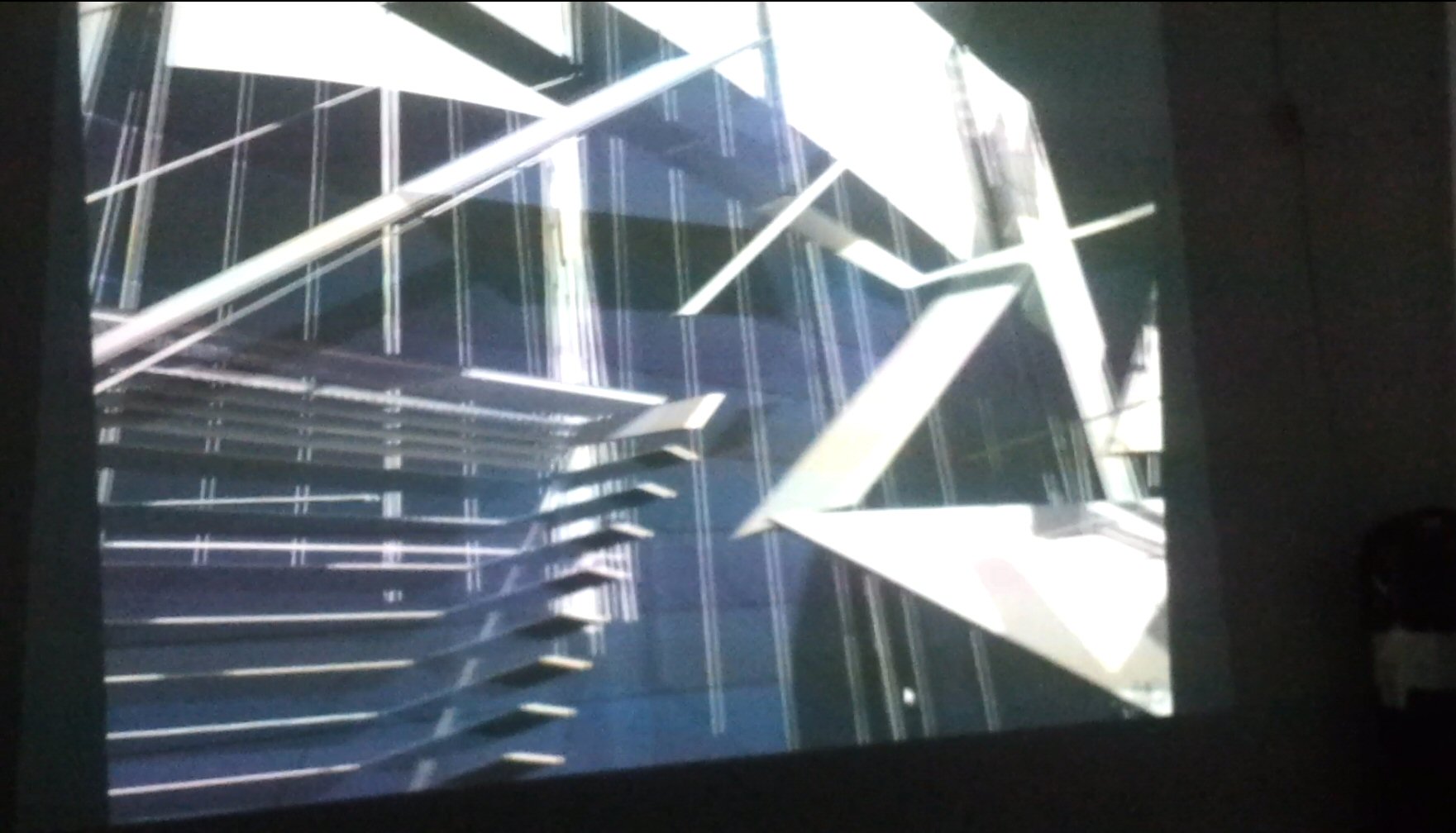
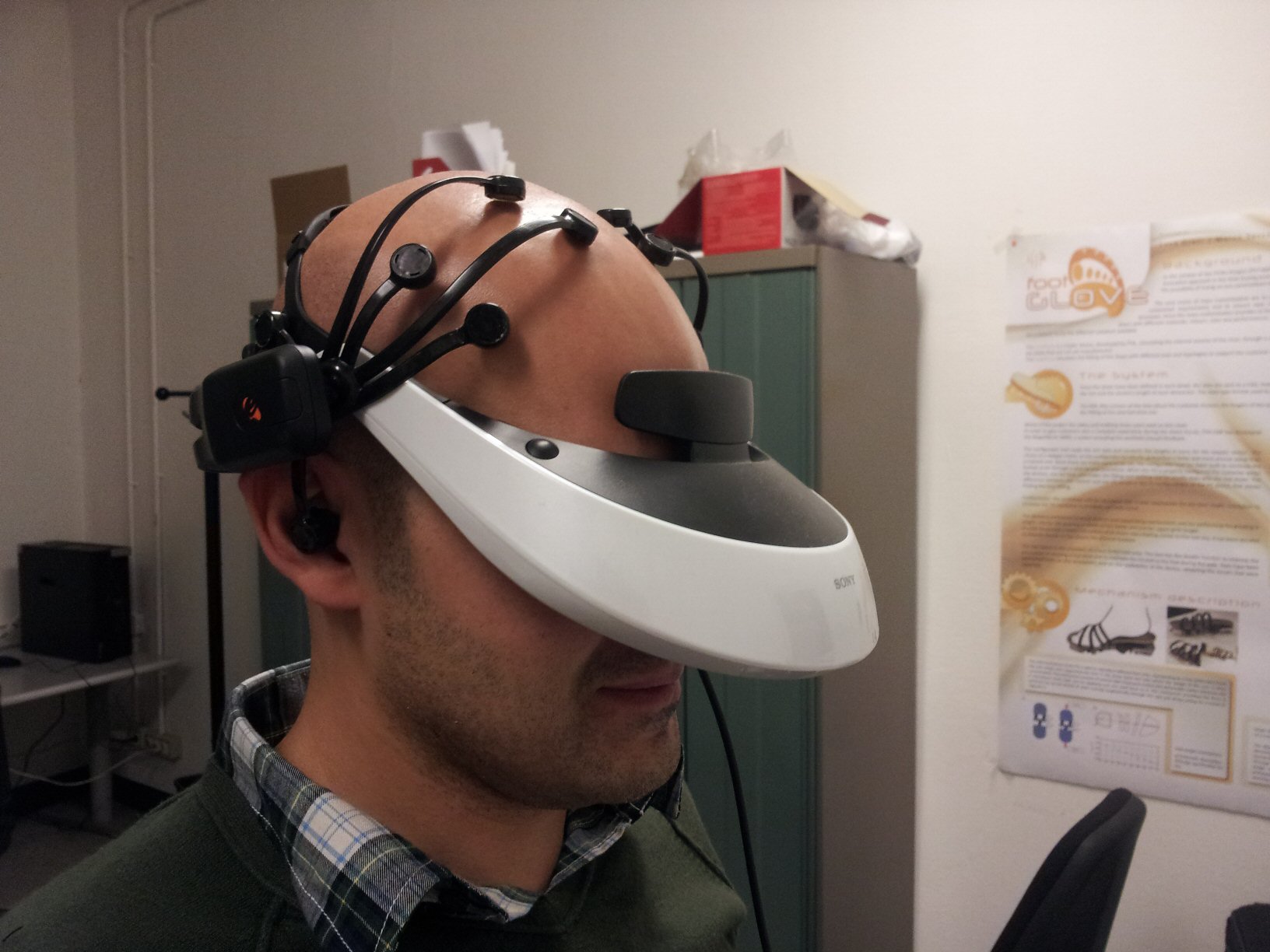
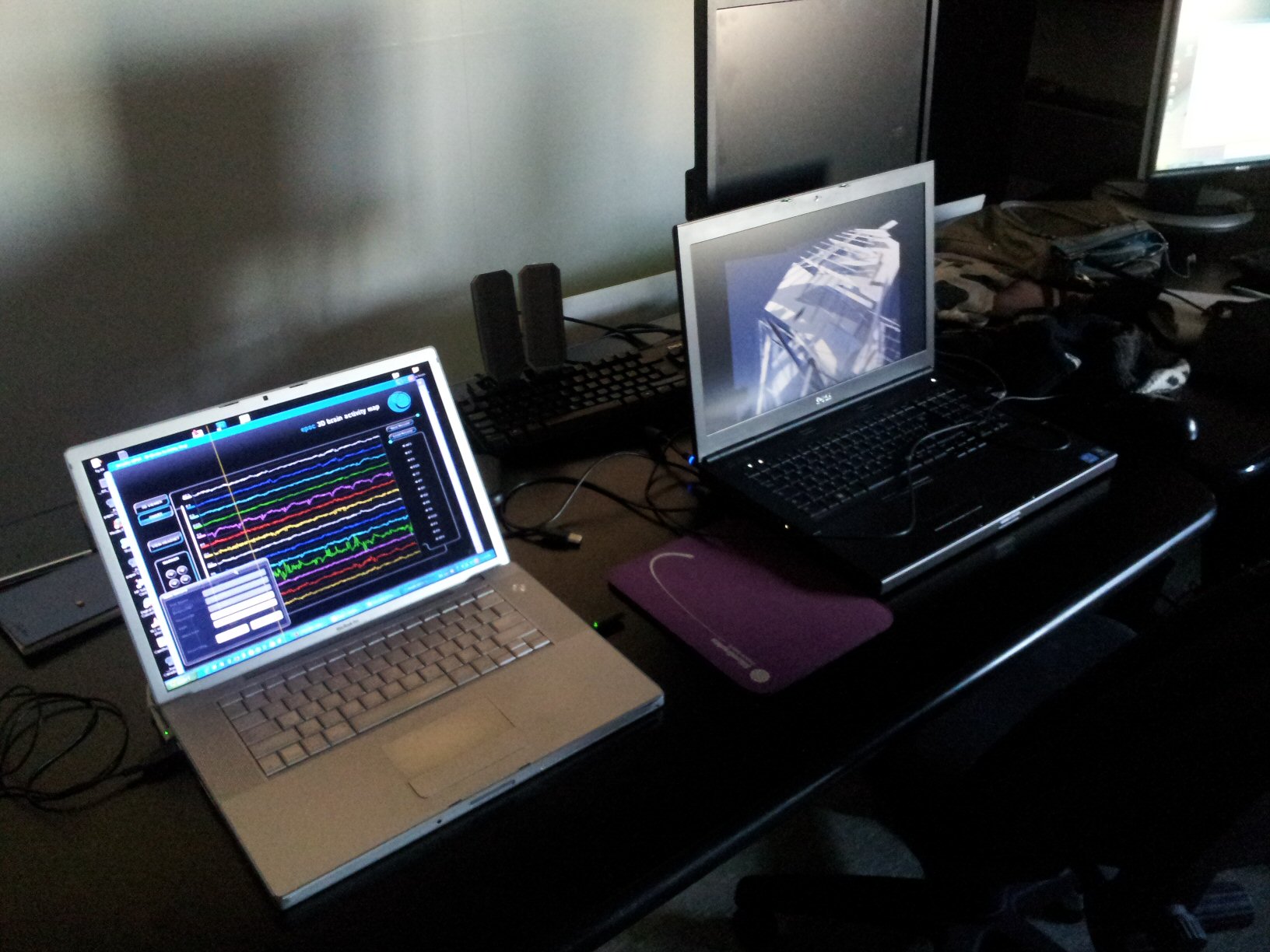
.

VISIONAIR / Grenoble INP / 46 avenue Felix Viallet / F-38 031 Grenoble cedex 1 / FRANCE
Project funded by the European Commission under grant agreement 262044

Project funded by the European Commission under grant agreement 262044
